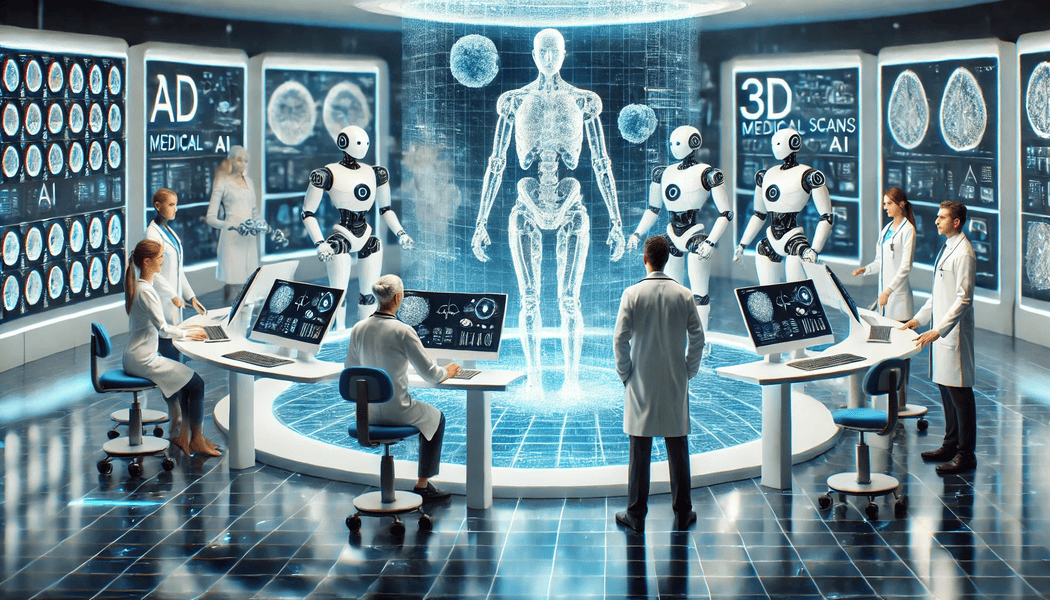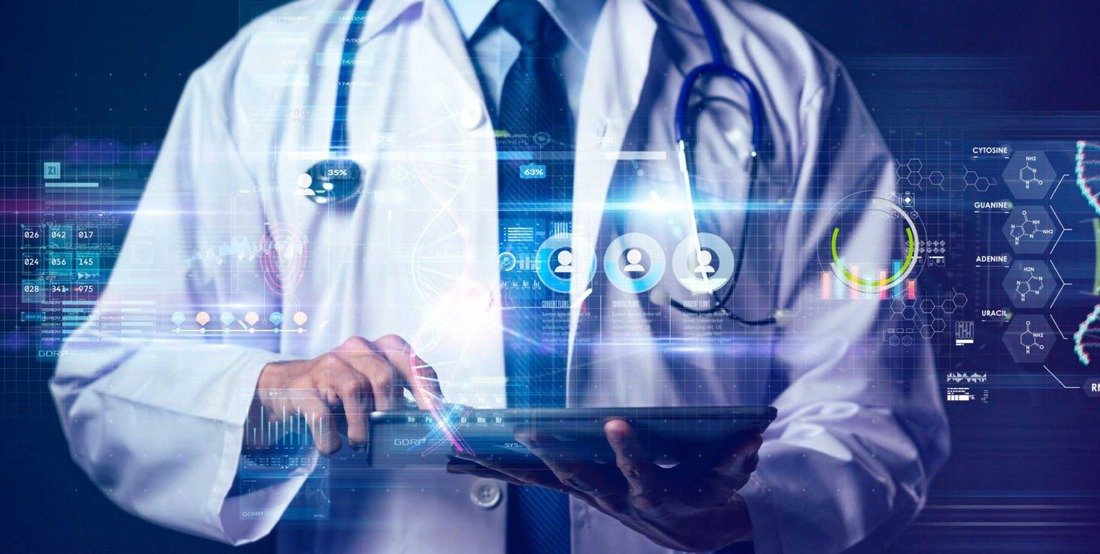
Researchers and medical professionals are prioritizing the fight against cancer and are committed to exploring advanced early detection technologies. Successful treatment often depends on early detection, although traditional technologies can miss subtle warning signs. Artificial intelligence (AI) plays a key role in this. AI cancer detection systems, which combine data analysis, medical imaging, and complex machine learning algorithms, are revolutionizing the way doctors diagnose cancer. These technologies can detect early signs of cancer invisible to the naked eye, significantly increasing the likelihood of timely treatment. As healthcare continues to embrace innovation, AI is proving to be a vital ally in transforming the future of oncology.
Early Cancer Detection Is Crucial:
Early cancer detection has a significant impact on patient outcomes. Studies have shown that tumors detected early have a greater chance of receiving effective treatment, resulting in improved survival rates and less invasive treatments. For example, breast cancer has a survival rate of over 90% when detected at stage 1, but survival is often significantly lower when detected at a later stage. While traditional diagnostic procedures (including CT scans, biopsies, and mammograms) are effective, they can sometimes produce false-positive or false-negative results. Artificial intelligence (AI) improves accuracy by examining thousands of data points and detecting subtle abnormalities that might go unnoticed with traditional methods. This reduces the burden of aggressive treatments and enables more people to receive treatment sooner, improving their quality of life.
How AI Improves Medical Imaging for Cancer Identification:
The combination of AI and medical imaging is one of the most innovative applications of AI in cancer detection. Radiological scans such as MRIs, CT scans, and mammograms generate large amounts of complex data that require careful interpretation. AI technology uses deep learning techniques to analyze images pixel by pixel and detect abnormalities with exceptional accuracy. For example, AI systems can identify abnormal cell activity in histopathological specimens, lung nodules in CT scans, and even small cancers in breast tissue. Compared to human radiologists, who are prone to fatigue or errors, AI ensures consistent and accurate analysis. Besides reducing diagnostic errors, this allows physicians to focus on patient care and personalized treatment plans.
AI and Cancer Genomic Data Analysis:
Besides imaging applications, AI also offers great potential for genomic data analysis, identifying genetic variants associated with different types of cancer. Certain DNA abnormalities are often a cause of cancer, and detecting these patterns can help assess cancer risk. AI systems can process large genomic datasets much faster than traditional technologies and have been able to identify genetic markers associated with lung, colorectal, ovarian, and breast cancer. AI combines genomic insights with imaging data to generate more comprehensive diagnostic plans. This helps oncologists tailor treatment options, such as immunotherapy or targeted therapies, based on each patient’s unique genetic makeup.
AI Applications in Laboratory Research and Pathology:
Pathology is another key area where AI is transforming cancer detection. Pathologists traditionally use microscopes to assess biopsy samples, which can be subjective and time-consuming. AI-powered pathology tools can accurately scan and analyze digital biopsy specimens to identify abnormal cell structures that could indicate cancer. For example, by detecting subtle glandular changes that even experienced physicians might miss, AI models can detect prostate cancer at an early stage. This not only accelerates the diagnostic process but also ensures higher accuracy, which is crucial for timely intervention.
Using AI to Reduce Diagnostic Errors:
The prevalence of diagnostic errors, such as false positives and false negatives, is a persistent problem in cancer diagnosis. False negatives can delay important treatment, while false positives can cause unnecessary stress and invasive procedures for patients. Artificial intelligence mitigates these risks by providing an additional layer of assessment. Studies have shown that error rates are significantly reduced when AI is used in conjunction with human radiologists. AI should complement, not replace, ensuring that patients benefit from both human knowledge and machine accuracy. This collaboration results in safer and more accurate cancer diagnoses.
Global Reach and Accessibility of AI Cancer Detection:
While advanced medical technology is often concentrated in wealthy countries, AI has the potential to close gaps in global healthcare. The shortage of radiologists and oncologists in many regions leads to delayed diagnoses and poor outcomes. AI, integrated into cloud-based platforms, enables remote analysis of medical images and diagnostic results. This creates new opportunities for resource-poor countries, enabling earlier cancer detection worldwide. The global reach of AI in healthcare can reduce disparities in cancer care and save more lives worldwide.
AI Cancer Detection: Challenges and Ethical Issues:
While AI cancer diagnosis holds enormous potential, its application also faces challenges. To ensure accuracy and fairness, issues such as algorithmic bias, data privacy, and the need for large, diverse datasets must be addressed. For example, an AI model trained primarily on data from one population may not perform well for others, increasing the risk of misdiagnosis. Moreover, questions about accountability and liability remain when AI systems influence important medical decisions. To ensure the reliability and widespread adoption of AI-based diagnostics, transparency, ethical data use, and medical monitoring are essential.
The Potential of Artificial Intelligence in Cancer Detection:
The application of artificial intelligence in cancer treatment is expected to continue to grow in the future. New technologies hold great potential, including AI-driven blood tests (liquid biopsies), real-time AI analysis during surgery, and cancer risk prediction analysis. As more clinical trials demonstrate their effectiveness, regulatory agencies are expected to authorize the broader deployment of AI tools. AI will ultimately be able to predict cancer risk before symptoms appear, enabling preventive measures beyond early cancer detection. The combination of AI with wearable technology, telemedicine, and continuous monitoring will usher in a new era of proactive and personalized cancer treatment.
Conclusion:
One of the most exciting developments in contemporary medicine is the application of AI in cancer screening. Artificial intelligence (AI) is revolutionizing cancer diagnosis and treatment by improving image analysis, decoding genomic data, increasing pathological accuracy, and reducing diagnostic errors. While data security and ethical concerns remain, its potential benefits cannot be ignored. Early diagnosis using AI can improve overall outcomes, reduce the invasiveness of treatment, and increase patient survival. As technology advances, AI’s contribution to oncology will only increase, making cancer treatments more precise, easier, and patient-focused. With innovation at its core, AI is more than just a technological advancement; it is a lifesaver for millions of people battling cancer worldwide.
FAQs:
1. What types of cancer can AI identify?
Using imaging and genetic analysis, AI has proven effective in detecting breast, lung, prostate, skin, and colorectal cancer.
2. Can AI detect cancer more accurately than doctors?
AI is a useful tool, but it cannot replace medical professionals. AI, combined with medical knowledge, can reduce diagnostic errors and improve accuracy.
3. How does AI perform cancer image analysis?
Artificial intelligence (AI) uses deep learning algorithms to scan medical images and detect patterns, abnormalities, or malignancies that the human eye might miss.
4. Can developing countries use AI to identify cancer?
Cloud-based AI solutions make cancer detection accessible even in areas with inadequate medical infrastructure, reducing healthcare disparities worldwide.
5. What role does AI play in the future of cancer detection?
AI-driven blood tests, prognostic cancer risk assessments, and real-time diagnostic tools integrated into surgeries and preventive treatments are all part of the future.


